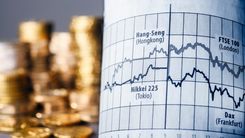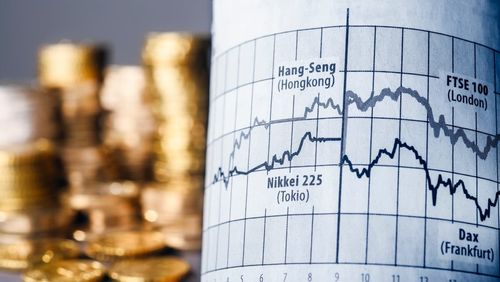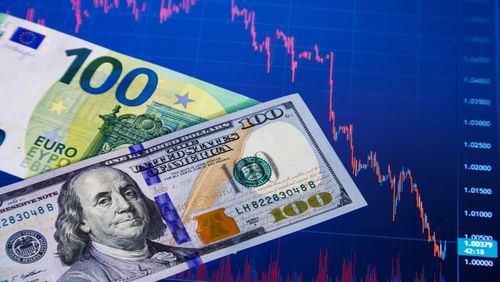Portfolio diversification is something all successful traders practice. Unsure where to start? Here’s a look at how you can diversify your stock portfolio this year.
Diversifying your portfolio
What is portfolio diversification?
Essentially, portfolio diversification is about protecting yourself against risks. The concept can also help you improve your risk-adjusted returns. Those are how much profit you can potentially make against your inherent risk.
A diverse portfolio contains open positions across a range of instruments and assets. This way, you’re not overly exposed to a single type of risk. Investors and traders use a multi-asset portfolio to balance potential risks, which can help create higher returns in the long run.
Why should you diversify your portfolio?
In an ideal world, all of your trades might turn a profit. Unfortunately, that’s not always the case. If you’ve put all your eggs in one basket, and gone all out on a single asset, you’re opening yourself up to a potential major loss.
This is especially true if you’re trading CFDs. Because these use leverage, you can open a position using a fraction of the total trade value. Great, but while that can multiply your profits, it can heavily multiply your losses too.
By spreading your capital across a wide variety of assets and sectors, you can protect yourself against this. Potential losses from one area of your portfolio that is underperforming can be offset by profits from other sectors.
This is why traders use a multi-asset portfolio to balance potential risks, which can help create higher returns in the long run.
Picking instruments & assets to diversify your portfolio.
There is a wealth of different diversified instruments available to traders who want to create a wide-ranging portfolio.
Equities
The most obvious choice for investors is equities, i.e., shares. It’s important to select a number from across different sectors and geographies to create diversification in your shares. By doing so, you can avoid historic pitfalls.
For instance, tech stocks were hammered when the dotcom bubble burst around 2000. Financial stocks were hit hard during the Great Recession of 2008, thanks to the subprime mortgage crisis. Flash forward to 2020, and hospitality and travel stocks have taken a beating due to Covid-19 pandemic-induced lockdowns. Investing across a further of stocks in a broad number of sectors can help you mitigate losses.
CFDs
CFDs or contracts for difference let you trade shares without owning them. Instead, you’re trading the difference between price points when the underlying asset moves up or down. The same principles that apply to stocks also apply here: trade CFDs across several different sectors or asset classes to mitigate potential losses. It’s diversification 101.
ETFs
ETFs are exchanged traded funds. They are investment instruments that track a group of markets, instantly offering diversification in one package. ETFs can include a variety of assets, including shares, commodities, currencies, and bonds.
They are passive instruments, so they mirror the returns of the underlying market and will not outperform it. They can help diversify your portfolio by giving exposure to numerous assets with a single position, potentially lowering risk.
Bonds
Bonds are fixed-income instruments representing a fixed amount of debt. They are most often issued by governments or corporations, paying regular interest payments until the loan the bond is drawn from is repaid. There are several different varieties of bonds, so you could potentially create a diverse portfolio of just bonds.
They are generally considered a more secure investment, due to their comparative low risk. Warren Buffet is a big fan. In a 2013 letter to Berkshire Hathaway shareholders, the investment ace instructed his wife to put 10% of his $80bn fortune into government bonds as a secure way of hedging bets against the future.
Commodities
Commodities are bulk tradeable assets. Think of products like oil, natural gas, metals, gold, crops, and so on. Rather than straight up buying the asset in question, you can trade futures contracts, i.e. agreements to exchange an asset for a set price on a set date, to get exposure to commodities.
ETFs are often used to provide diversification in commodity trading, as they bundle together a group of commodities together, but you can also explore further by investing in companies involved in the production, mining, and selling of companies.
Asset allocation
Another important part of diversifying a portfolio is asset allocation. A good rule of thumb is not to put too much capital into any one specific sector or asset class. Again, this is all about mitigating your risk.
Suppose you had 80% of your capital tied up in a single stock, and 20% spread across multiple asset classes. In that case, the potential losses from the single stock may completely outweigh any profits from the remainder of your portfolio. You could thus end up taking a heavy net loss.
It’s all about balance, which the example diverse portfolio below will show.
An example diversified portfolio.
David Swenson, the investor in charge of overseeing Yale University investments in the US, is a good example to follow. According to the New York Times, David has managed to get 16.3% annualised ROI on his investments over the past 20 years of managing Yale’s endowment, worth around $20bn.
In those 20 years, we’ve seen some tough market conditions. The Great Recession, for example, put massive, massive pressure on financial markets globally. Through diversification, David’s portfolio has been able to weather such storms and continues to deliver significant returns.
Here’s what David’s diversified portfolio looks like:
- 30% – US stocks
- 15% – International stocks from Developed economies
- 5% – Emerging markets stocks
- 20% – Real estate funds
- 15% – Government bonds
- 15% – Treasury inflation-protected securities
You’ll note no single choice represents an overwhelming section of David’s portfolio. Any underperforming sector losses will potentially be covered by the other parts of the portfolio, thus mitigating the risk factor.
How to diversify your portfolio
Step 1: Open your account.
Firstly, you’ll need to create an account with Markets.com.
That way you can get access to our trading platforms and instruments.
You can use the Investment Strategy Builder to power your investment strategy or use one of our ready-made options to invest with a little extra help.
Alternatively, use Markets.com to select and trade thousands of CFDs across commodities, shares, and more diversified instruments.
Step 2: Choose your assets.
Remember, variety is the spice of life, and the same is true with portfolio diversification.
Over 2,200 CFDs are available on our platform, covering all the major asset classes.
Think about what you want to achieve, and your commitments and budget.
With that in mind, consider your assets. Do you like the look of oil futures and gold? What about US technology stocks on the Nasdaq vs FTSE 100 performers from the UK? Geography and sector will all play into your decision-making here, but as we’re talking about diversification, it’s an idea to take a broad brush and choose from a range.
Always do your due diligence before investing though.
Step 3: Open your preferred positions.
Use our platforms to place your first trade.
Step 4: Monitor your positions.
Monitoring and evaluating your diversified portfolio is very important if you want your trades and investments to succeed. This is not a one-time thing. You must keep things balanced.
Keep an eye on your investments to ensure you are not exposing yourself to risks you are uncomfortable with.
You might have personal matters that impact your risk tolerances, such as a change in financial circumstances, or your long-term goals might change. In more extreme cases, the risk profile of your assets might change, i.e. a stock market crash.
It’s also necessary to know when to close a position. Be sure to keep up to date with any changes in market conditions, so that you know when it’s time to close your trade. Once you close one position, it’s a good idea to look at how you will readjust your portfolio.

















